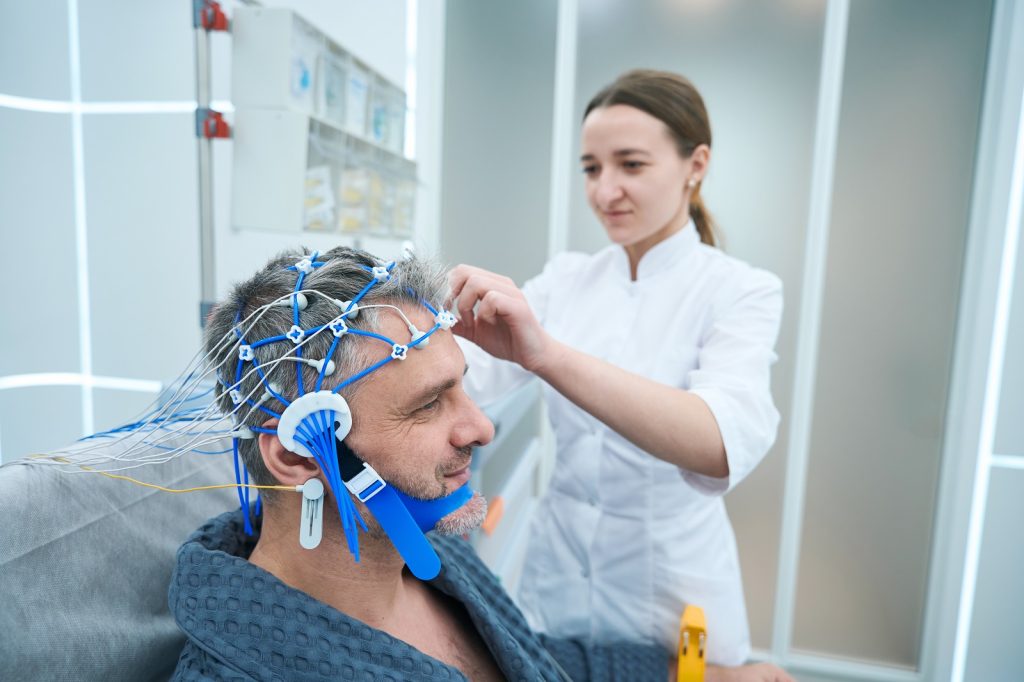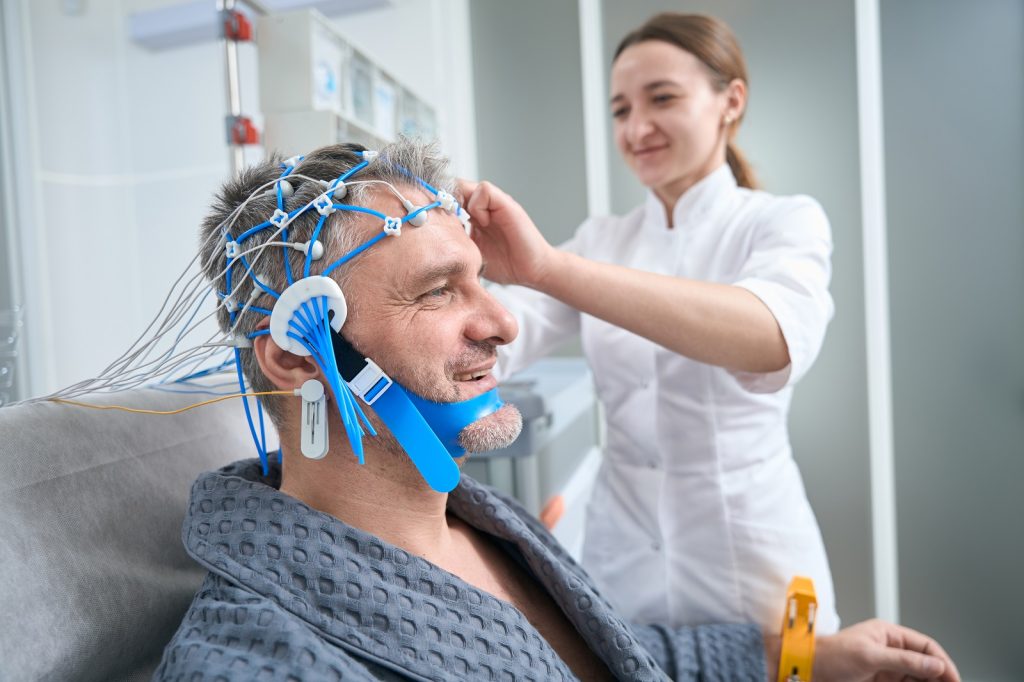Neurodynamics of the Body
Neurodynamics, also known as neurodynamics of the body, refers to the complex interaction between the nervous system and the mechanical properties of the body. This field of study explores how nerves move, stretch, and glide within the body’s tissues, and how these dynamics impact overall health, function, and movement. Understanding neurodynamics is essential for diagnosing and treating various neuromusculoskeletal conditions.
What is Neurodynamics?
Neurodynamics involves the study of:
- Nerve Mobility: How nerves move and adapt as the body moves.
- Nerve Health: The condition of nerves and how they can be affected by injuries, inflammation, or chronic conditions.
- Nerve Function: How nerves transmit signals to and from the brain to control muscles and bodily functions.
Importance of Neurodynamics
Neurodynamics is crucial for several reasons, each of which plays a significant role in maintaining and improving overall health and functionality:

Diagnosing Conditions
Neurodynamics helps in accurately identifying conditions such as nerve entrapment, neuropathies, and other nerve dysfunctions. By understanding the dynamics of nerve movement and function, healthcare professionals can pinpoint the exact location and nature of nerve-related issues. This precise diagnosis is essential for developing targeted and effective treatment plans, ultimately leading to better patient outcomes.
Treatment Planning
Neurodynamics guides healthcare professionals in creating comprehensive treatment plans that address both the mechanical and neurological aspects of a condition. For instance, conditions like carpal tunnel syndrome or sciatica require not only addressing the mechanical compression of nerves but also improving nerve mobility and health. Integrating neurodynamic principles into treatment plans ensures a holistic approach that can more effectively alleviate symptoms and promote healing.
Preventing Injuries
Understanding how nerves interact with muscles and joints is key to designing preventive strategies for athletes and individuals prone to repetitive strain injuries. By incorporating neurodynamic principles into training and daily routines, it is possible to reduce the risk of nerve injuries. This is particularly important for individuals engaged in repetitive or high-stress activities, as proper nerve health can prevent conditions such as tendinitis, bursitis, and other overuse injuries.
Enhancing Performance
For athletes and performers, optimizing neurodynamics can significantly enhance physical performance. Improved nerve function leads to better coordination, strength, and flexibility, all of which are critical for peak performance. By ensuring that nerves can move and function without restriction, athletes can achieve more efficient and effective movements, reducing the likelihood of injury and improving overall athletic capability.
Neurodynamic Testing and Treatment
- Assessment:
- History and Symptoms: Initial consultation involves understanding the patient’s medical history and symptoms, such as pain, tingling, or numbness.
- Physical Examination: Includes assessing posture, range of motion, and conducting specific neurodynamic tests to evaluate nerve function and mobility.
- Neurodynamic Tests:
- Upper Limb Tension Tests (ULTTs): Assess the mobility of nerves in the upper extremities, such as the median, ulnar, and radial nerves.
- Slump Test: Evaluates the sciatic nerve’s mobility and can indicate nerve root irritation or tension.
- Straight Leg Raise (SLR): Tests the mobility of the sciatic nerve and its branches.
- Treatment Approaches:
- Manual Therapy: Techniques such as nerve gliding and mobilization to improve nerve mobility and reduce tension.
- Exercise Therapy: Specific exercises designed to enhance nerve health and function, improve flexibility, and strengthen muscles.
- Education and Ergonomics: Teaching patients about proper body mechanics, posture, and ergonomics to prevent nerve compression and irritation.
Benefits of Neurodynamic Treatment
Neurodynamic treatment offers numerous benefits that can significantly enhance health, well-being, and performance. Here are some of the key advantages:
- Pain Relief:
Neurodynamic treatments are highly effective in reducing nerve-related pain, such as sciatica or carpal tunnel syndrome. By improving the mobility and function of nerves, these treatments can alleviate the compression and irritation that often cause chronic pain. Patients frequently experience significant pain relief, which can lead to improved quality of life and reduced dependence on pain medications.
- Improved Function:
Enhancing the overall function and mobility of the body is a primary goal of neurodynamic treatment. By addressing the underlying nerve issues that may impede movement, this treatment improves the range of motion and physical capabilities. Patients can perform daily activities with greater ease and efficiency, experiencing less discomfort and stiffness.
- Reduced Inflammation:
Neurodynamic treatment helps in reducing inflammation around nerves, which is a common source of pain and discomfort. By promoting better nerve health and mobility, these treatments can decrease inflammation and facilitate faster recovery from injuries. This reduction in inflammation also helps prevent chronic conditions from developing or worsening.
- Enhanced Performance:
For athletes and individuals who engage in physical activities, optimizing neurodynamics can lead to improved performance. By ensuring that nerves can move freely and function optimally, neurodynamic treatments enhance coordination, strength, and flexibility. This improvement not only boosts athletic performance but also reduces the risk of injuries, allowing athletes to train and compete more effectively.
Conditions Treated with Neurodynamics
Neurodynamic techniques are beneficial for a wide range of conditions, including:
- Sciatica: Pain radiating along the sciatic nerve due to compression or irritation.
- Carpal Tunnel Syndrome: Compression of the median nerve in the wrist.
- Thoracic Outlet Syndrome: Compression of nerves and blood vessels in the thoracic outlet.
- Chronic Pain Syndromes: Conditions like fibromyalgia where nerve sensitivity and dysfunction are present.
- Sports Injuries: Various nerve-related injuries common in athletes.

Understanding the neurodynamics of the body is essential for maintaining optimal nerve health and function. Whether you are dealing with chronic pain, recovering from an injury, or seeking to improve athletic performance, neurodynamic assessment and treatment can provide significant benefits. By addressing the intricate relationship between the nervous system and movement, healthcare professionals can offer more effective and comprehensive care.
Contact Us
Feel free to contact Dr. Burhan to book a consultation and explore how neurodynamic treatments can enhance your health and well-being. Dr. Burhan and his expert team are dedicated to providing personalized care, using advanced techniques to diagnose and treat nerve-related conditions effectively. Take the first step towards better nerve health and improved quality of life by reaching out today.


